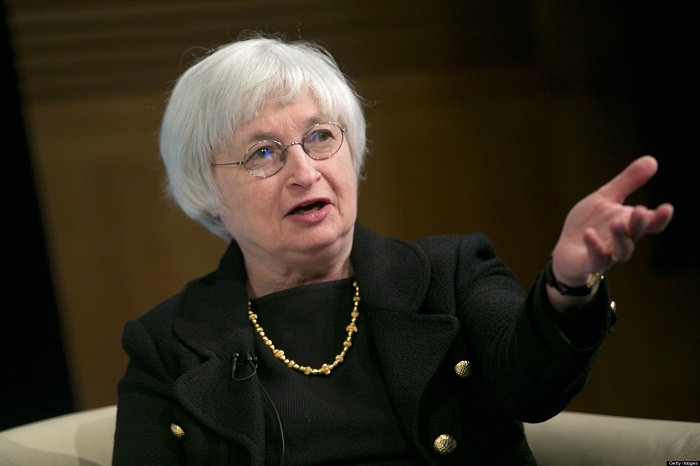“The bottom line is that we must recognize that our unconventional tools might have to be used again,” Ms. Yellen said in a speech to the National Economists Club.
The Fed announced in September it would begin to reduce its $4 trillion portfolio of Treasuries and mortgage backed securities. It plans to shed $10 billion per month during the final quarter of 2017, then increase the pace by $10 billion every three months until it reaches a monthly rate of $50 billion.
The Fed bought the bonds during and after the 2008 financial crisis as part of its broader campaign to revive economic growth by reducing borrowing costs for businesses and consumers. As it sheds the bonds, it expects interest rates to rebound gradually.
Continue reading the main story
The Trump White House
The historic moments, head-spinning developments and inside-the-White House intrigue.
Conflicting Accounts in Niger Ambush Are Subject of Pentagon Investigation
OCT 20
Kelly, in Defending Trump Call, Holds Up Military as an Elite Class
OCT 20
Trump Falsely Ties British Crime Rise to ‘Radical Islamic Terror’
OCT 20
I.R.S. Says It Will Reject Tax Returns that Lack Health Insurance Disclosure
OCT 20
Trump’s America First Trade Agenda Roiled by Internal Divisions
OCT 20
See More »
The Fed is also considering when to raise its benchmark interest rate again. Investors expect a quarter-point increase at the Fed’s final meeting of the year in December. Ms. Yellen did not address those plans on Friday, but she has previously indicated she favors such an increase barring unexpected economic disruptions.
President Trump said on Friday that he is still considering whether to appoint Ms. Yellen to a second term as chairwoman. Her current four-year term ends in early February.
“I really like her a lot,” Mr. Trump said in an interview with Fox Business Network.
Mr. Trump said he is also considering two other candidates: Jerome H. Powell, a Republican member of the Fed’s board of governors, and John Taylor, an economist at Stanford University who has accused the Fed of raising interest rates too slowly.
Mr. Trump’s short list did not include two other men previously mentioned as candidates: Gary Cohn, his chief economic adviser, and Kevin Warsh, a former Fed governor.
The Fed’s bond purchases have generated considerable controversy. Critics, including Mr. Taylor and Mr. Warsh, argued at the time that the Fed was trying too hard to revive growth, and that it was instead stoking the fires of inflation. Those criticisms proved to be misplaced. Others argue the purchases were simply ineffective.
Ms. Yellen said Friday, as she has previously, that the purchases helped jump-start the economy.
“The evidence strongly suggests that forward rate guidance and securities purchases — by substantially lowering borrowing costs for millions of American families and businesses and making overall financial conditions more accommodative — did help spur consumption and business spending, lower the unemployment rate, and stave off disinflationary pressures,” she said.
She added, however, that the Fed still needed to show that it could end the program.
“We have met the first challenge and have made good progress to date in meeting the second,” Ms. Yellen said.
The Fed is not selling its bond holdings. As the bonds mature, it has used the proceeds to buy new bonds. Now it is gradually reducing the reinvestment, removing the rest of the money from circulation.
Ms. Yellen also defended a law that allows the Fed to pay interest on some of the money that banks deposit at the Fed.
Congressional Republicans have criticized those payments as an unnecessary subsidy to the financial industry. But Ms. Yellen said the law enabled the Fed to manage its retreat.
As the Fed bought bonds from banks, it paid them by increasing their reserve balances. That made it impossible to raise interest rates in the traditional manner, which is based on the scarcity of those reserves.
The Fed could have reversed the process and then started raising rates, but it feared that doing so would disrupt financial markets. Instead, the Fed has raised rates by paying banks not to use the reserves.
And that, in turn, allows the Fed to reduce its bond holdings slowly and smoothly.
Ms. Yellen took a measured line on the potential impact of tax cuts on the course of monetary policy.
In response to a question from the audience, she described fiscal policy as “one of many factors” that might influence the Fed’s plans. The Fed could seek to offset a large fiscal stimulus by raising interest rates more quickly, but Ms. Yellen suggested that depended on details of the tax plan.
The Fed is likely to be more concerned about policies that stimulate aggregate demand, while it would welcome policies that increase the economy’s capacity for growth, for example, by expanding participation in the labor force, or encouraging investment.
“My personal hope is that whatever Congress passes is rich in incentive effects on the supply side,” Ms. Yellen said.
More about: #FED
















































